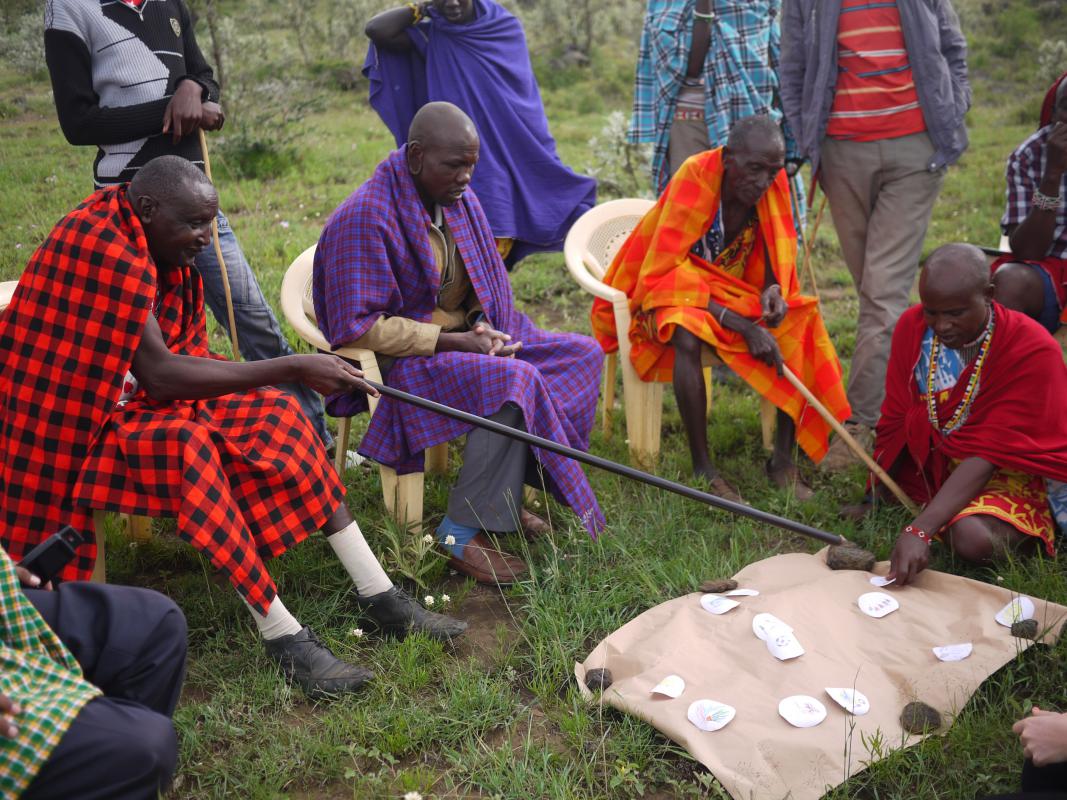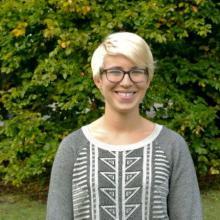
*This article was coauthored by Bettina Werner.
Projects involving urban development, the environment and education throughout the developing world are often run and managed by foreign NGO's. Some believe their methods and systems, ‘western best-practice approach', is the best implementation and tool of action. However, this does not generally apply to local groups or indigenous communities. There is a risk for projects with such an ethnocentric approach to fall into categories of charity and altruism. Even if intentions are well meaning, development projects can easily fail due to a lack of personal engagement and ownership with local communities. Co-creation is one particular research approach, that at CITITEK, we believe is making the development process different, innovative and inclusive for the people whose everyday lives the project ultimately concerns.
 Project LIFE – Livability Infrastructure for Everyone – is initiated by the Kisharu community at Mt. Suswa Conservancy, in south-western Kenya. Kisharu is a very spread out, rural Maasai community of approximately 2,400 people. The Maasai of Kisharu are living a very traditional pastoralist life; illiteracy is high, there is no electricity and limited access to water. Due to a combination of financial instability, disease and child neglect, there are over 90 orphaned and vulnerable children in Kisharu. Girls in particular are in danger of genital mutilation and forced marriage as early as ages 9 to 13. The community's solution and goal is to develop a children's school and home to offer the children opportunities for a different life. The Kisharu community does not have the financial or material means to implement a project without outside assistance. The Kenya based social impact firm, Crater Creations, in collaboration with CITITEK – our Copenhagen based design firm – has taken on the task of facilitating the community in achieving their goal.
Project LIFE – Livability Infrastructure for Everyone – is initiated by the Kisharu community at Mt. Suswa Conservancy, in south-western Kenya. Kisharu is a very spread out, rural Maasai community of approximately 2,400 people. The Maasai of Kisharu are living a very traditional pastoralist life; illiteracy is high, there is no electricity and limited access to water. Due to a combination of financial instability, disease and child neglect, there are over 90 orphaned and vulnerable children in Kisharu. Girls in particular are in danger of genital mutilation and forced marriage as early as ages 9 to 13. The community's solution and goal is to develop a children's school and home to offer the children opportunities for a different life. The Kisharu community does not have the financial or material means to implement a project without outside assistance. The Kenya based social impact firm, Crater Creations, in collaboration with CITITEK – our Copenhagen based design firm – has taken on the task of facilitating the community in achieving their goal.
The essence of participatory action is tied intrinsically to values of self-determination, direct democracy and place-bound identity. In development projects such as Project LIFE, co-creation and face-to-face methods are invaluable. Co-creation has proved to be a salient approach when it comes to projects involving children and vulnerable groups since it promotes inclusion and acknowledges the voices of individuals and communities in social research. When involving vulnerable groups in participatory research, especially children, there is often need for designers and researchers to be more creative and adaptive in their methods and approaches toward collaboration. For Project LIFE this means the research must facilitate and enable people to tell their stories to provide an understanding of how children in Kisharu perceive and shape their environment, in order to create an inclusive design together with them.

The premise that, no one knows their needs better than the users, is central to the philosophy behind our user-driven approach to interactive design. Participation is a means for citizens of a community to gain power to shape their environment and power in the processes of decision making regarding issues that concern their everyday life. It is essential for all participants to express their values, judgements, goals and intended outcomes in a development process. However, emphasis is also added on that participation should be meaningful – especially in processes where obvious generational or hierarchical structures are prevalent. Vulnerable groups and youth often have little to no experience in exercising power and it is therefore crucial when working with children to define a framework in which they understand their contribution.
Co-creation in Kisharu
For project LIFE, with the people of Kisharu, we relied on props in the co-creation workshops. With the children, we started out with a group interview, introducing ourselves and our mission, we talked about their everyday life, difficulties and positive things like play, to spark their thinking. We asked them to draw things on big papers that made them ‘happy', in order to learn what features we should emphasize in the design to create a supportive and creative environment where they would feel comfortable. At a follow up workshop we created a ‘dream room' using sparkling straps of paper in a tree, under which the children were allowed to dream freely about the features of a dream school.
In a similar manner, we conducted a drawing exercise with the community leaders in relation to a group interview where they drew ‘Kisharu'. Like the children, only one of the four community leaders had experience writing and drawing. Working out of a mindset that "everyone can draw", we still decided to go through with the exercise, which proved fruitful. It gave us ideas on how community leaders perceive their home in relation to the community, to certain landmarks, to other property owners and communications with the region.
 We drove and hiked throughout the area, together with our key informant, which gave beautiful insights into the landscape, flora, fauna, medicinal and multi-use plants and culturally significant places. We conducted a site walk to decide on the 3 acre plot that will be designated for project LIFE together with the engineer and two local women, one who is the land owners wife. Through her active involvement we now know what parts of the land flood, where soil is good, which directions the wind blows. These tactile understandings only enrich the development process, and even more importantly, it allowed us to have a conversation with her about privacy and ownership, since it is her family that owns the land.
We drove and hiked throughout the area, together with our key informant, which gave beautiful insights into the landscape, flora, fauna, medicinal and multi-use plants and culturally significant places. We conducted a site walk to decide on the 3 acre plot that will be designated for project LIFE together with the engineer and two local women, one who is the land owners wife. Through her active involvement we now know what parts of the land flood, where soil is good, which directions the wind blows. These tactile understandings only enrich the development process, and even more importantly, it allowed us to have a conversation with her about privacy and ownership, since it is her family that owns the land.
We conducted an additional co-creation activity with all participating groups separately. In this workshop we put out a blank paper and had prepared post-its with drawn features that is necessary for the school and home, such as kitchen, dormitory, classrooms, garden etc. We also left some post-its blank if they wanted to add facilities and features that we hadn't considered. We then made a floor map in which the groups had to discuss where to place the different features on the paper in relation to each other. This provided us with wonderful insights into the differences of criteria and priorities of the features between the different groups. Depending on what they added to the pre-made set of things we could also ask questions around why those things were important.
This activity is planned for at a second round of co-creation workshops in March 2016, where instead of post-its we will provided models and prototypes, to map out and customise.

LIFE is not the first project where a white NGO has tried to help an indigenous community by building a school and orphanage. It won't be the last either. But maybe this can be a project that inspires more organisations to use a more sustainable approach through co-creation, to ensure that the community initiates and is involved throughout the entire development process. The feedback from the community has been fantastic and are enthusiastic as we are for our return in March. Many of the older residents of Kisharu have seen similar projects starting up in the area, but none had experienced such an extensive and inclusive research process before construction. They are excited to be a part of Project LIFE and we are excited to continue working with the community. ![]()

